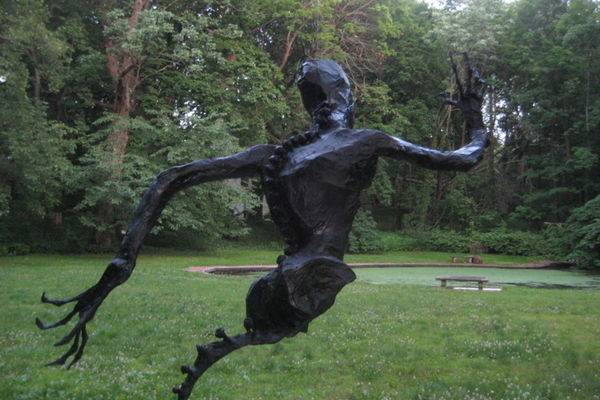Build a 3d literary creature
Build a three-dimensional literary creature inspired by a favorite book using recycled materials, glue, and paint, then write its short backstory and characteristics.



Step-by-step guide to build a three-dimensional literary creature
FIGURATIVE SPEECH for KIDS 🧾 Similes, Metaphors and Hyperboles ✏️ Literature for Kids ✍️ Episode 1
Step 1
Pick your favorite book and decide which character or creature will inspire your 3D literary creature
Step 2
Gather the recycled pieces and tools you will need and set them on a clear workspace
Step 3
Draw a simple sketch of your creature showing its body shape main features and colors
Step 4
Choose the recycled pieces that match the body head and major parts from your sketch
Step 5
Cut and shape the chosen pieces with safety scissors to make them fit your design
Step 6
Glue the main body pieces together to form a sturdy 3D shape
Step 7
Attach limbs features and details like eyes wings or tails using glue or tape
Step 8
Set your creature aside and let the glue dry completely
Step 9
Paint the creature with base colors using your brushes and let the paint dry
Step 10
Add small painted details patterns or finishing touches with markers or a fine brush
Step 11
Write a short backstory and list three key characteristics for your creature on paper
Step 12
Share your finished creation on DIY.org
Final steps
You're almost there! Complete all the steps, bring your creation to life, post it, and conquer the challenge!


Help!?
I can't find safety scissors or acrylic paint—what can I use instead?
If you don't have safety scissors or acrylic paint, have an adult pre-cut the recycled pieces and use washable tempera or watercolors to 'Paint the creature with base colors', and use craft glue or strong double-sided tape to 'Glue the main body pieces together'.
My creature keeps collapsing—how do I make a sturdier 3D shape?
Reinforce the 'Glue the main body pieces together' step by adding an internal cardboard or rolled-up paper core, secure joints with tape or hot glue (adult only), and allow extra drying time after you 'Set your creature aside and let the glue dry completely'.
How can I adapt this project for younger or older children?
For younger kids, simplify by using larger recycled parts, pre-cut pieces, and washable paints while an adult handles cutting and strong glue, and for older kids, encourage a detailed 'Draw a simple sketch', advanced shaping, layered painting, and a more complex 'Write a short backstory' with character traits.
How can we personalize or extend the activity after finishing the basic creature?
Add movable limbs with brads or string at the 'Attach limbs' step, texture the surface with papier-mâché before 'Paint the creature', incorporate LED tealights safely for glowing eyes, and expand the 'Write a short backstory' into a short illustrated scene to share on DIY.org.
Watch videos on how to build a three-dimensional literary creature
How To Make 3D Shapes Model for School Project | 3D Shapes Maths Project | Geometric Shapes Model
Facts about recycled arts and crafts for kids
♻️ Upcycling turns trash into treasure — many artists build sculptures from recycled bottles, cardboard, and fabric.
✍️ Even a tiny backstory (one or two sentences) can give your creature personality and inspire its look and behavior.
📚 Children's books often spark creature designs: illustrators bring characters to life long before movies do.
🗿 Humans have been making small sculptures for over 25,000 years (think ancient figurines like the Venus of Willendorf).
🐉 Mythical creatures like dragons and griffins appear in stories from cultures all over the world.
How do I build a 3D literary creature inspired by a favorite book?
What materials do I need to build a 3D literary creature?
What ages is this activity suitable for?
What are the benefits of making a 3D literary creature?


One subscription, many ways to play and learn.
Only $6.99 after trial. No credit card required



